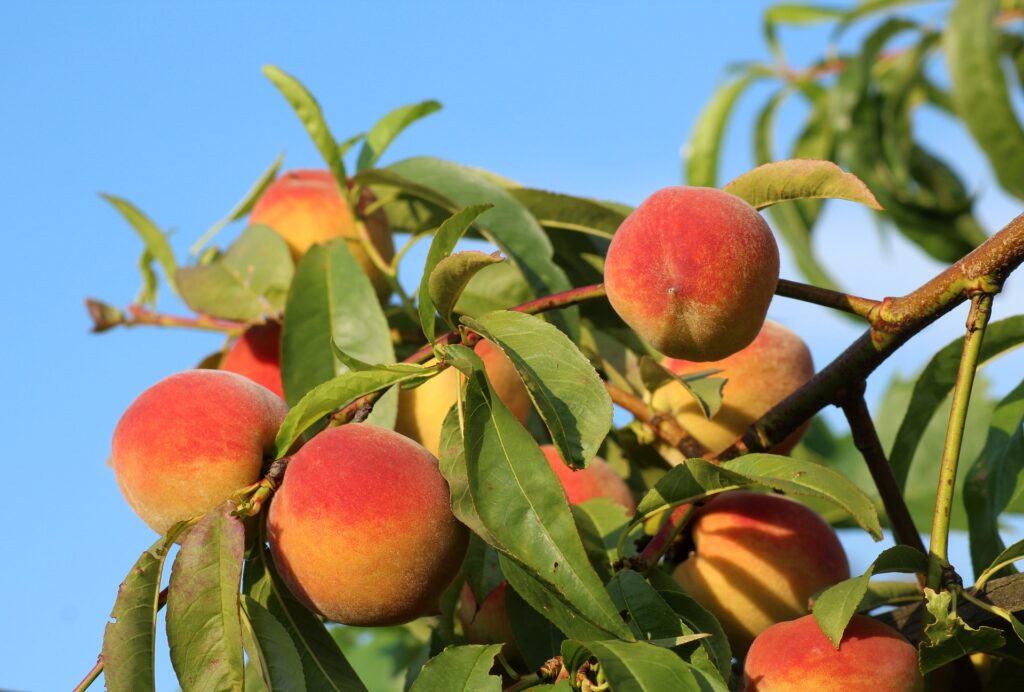Stone Fruits Round Out Florida’s Sweet Offerings
Sponsored by Farm Credit of Central Florida
by ERIKA ALDRICH
While citrus may be The Sunshine State’s bread and butter when it comes to crops, there are many other types of prize crops in Florida besides citrus. Stone fruits like peaches, nectarines, and plums love the Florida sunshine just as much as oranges and grapefruit. While the stone fruits industry in Florida does not yet rival that of other states, it is nevertheless an important—and tasty—part of Florida agriculture! Explore the stone fruits industry in Florida, and see its impact on The Sunshine State, and enjoy Florida-grown stone fruits in stores today!
Stone Fruits in Florida
Stone fruits in Florida started to officially take root in 1952 with the formation of the Florida stone fruit breeding program. Just like the stone fruits industry today, the program looked to develop early-maturing, low-chilling stone fruits with good disease resistance to be the first tree-ripe stone fruits to the market in the season.
Florida’s subtropical climate requires the development of stone fruit cultivars with low chill requirements. Stone fruits like peaches and nectarines require a certain number of hours in a cold temperature—approximately 45 degrees Fahrenheit to 32 degrees—to grow and develop high-quality fruit. With the development of low-chill and moderate chill varieties, or varieties with a requirement of somewhere around 100 to 450 chill hours, stone fruits can be grown in The Sunshine State as far south as Immokalee.
Nectarines
Nectarines are the same species as peaches, they just lack the “peach fuzz” found on peaches. In 2019, Florida produced 47 tons of peaches on 8,300 acres. Growers averaged 119 boxes of nectarines an acre, for a total production value of over $21 million. Over $17 million of the total production value was for fresh market nectarines, while $4 million was for nectarines marked for processing.
Mangoes
As a tropical stone fruit, mangoes do not have chill hour requirements, and they are most commonly grown in South Florida. The 2017 Census of Florida Ag lists 921 mango producers on 2,672 acres. Based on 2014 numbers on the Crop Profile for Mango in Florida by the Southern Integrated Pest Management Center and the USDA, the 2017 mango industry would account for about $2.5 million to Florida’s ag industry.
Peaches
Peaches started gaining ground in Florida as an alternative crop in the mid-2000s. Peaches are an attractive crop as they have a window from mid-March to the end of April without any other competition from other states or foreign producers. Florida’s production of peaches is still growing. Per the 2017 Census of Florida Ag, there were 337 peach farms growing on 1,025 acres. The data for the value of Florida’s peach production is not yet being tracked or collected; however, Steven Callaham, CEO of the Dundee Citrus Growers Association—of which the Dundee Stone Fruit Growers Association, LLC, is a subsidiary—estimated in 2019 that peach production in Florida is averaging a harvest of 2.5 million pounds a year for commercial production and about 500,000 pound for u-pick productions.
Plums
There are a few plum cultivars that have been created by the University of Florida that are suitable for growing in The Sunshine State. The 2017 Census of Florida Ag recorded 141 farms in Florida growing plums on 94 acres; two of those farms were focused on prunes, or a dried plum.
Other Stone Fruits. The stone fruits include apricots and cherries. While not as popular as other stone fruits in Florida, the 2017 Census of Florida Ag reported there were 17 farms growing cherries, sweet and tart cherries, and five farms growing apricots, in The Sunshine State.
Sponsored by Farm Credit of Central Florida


